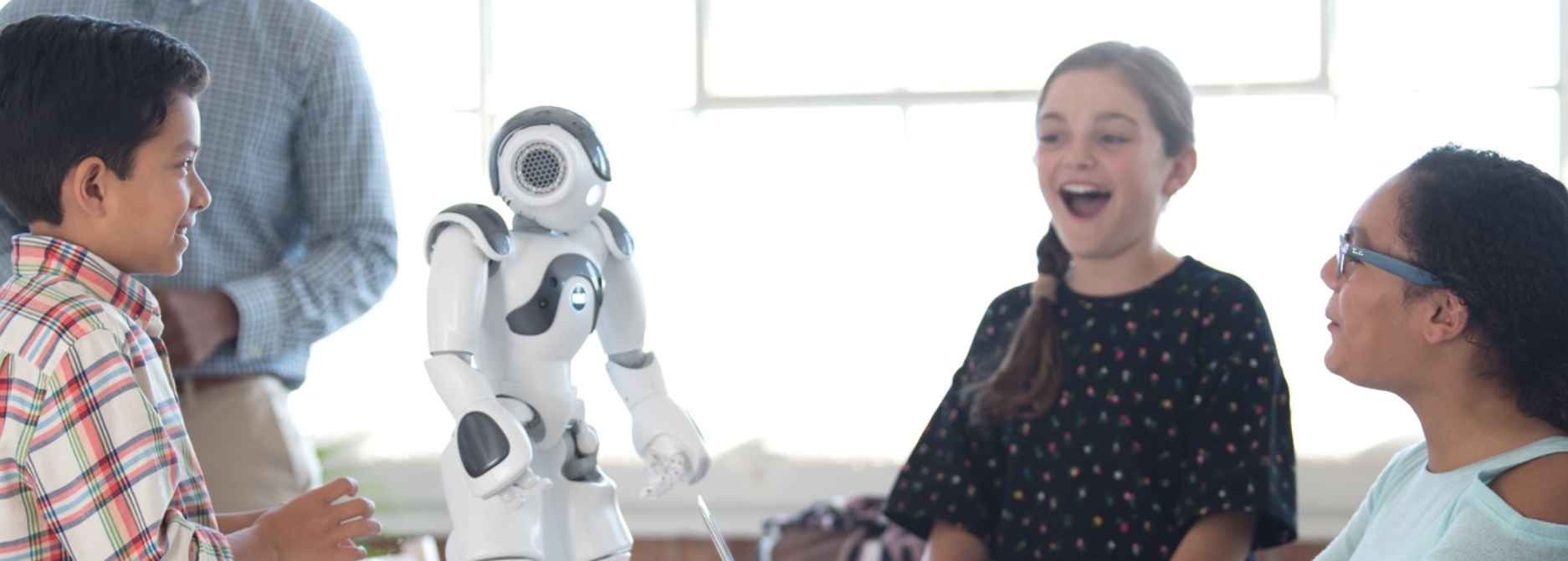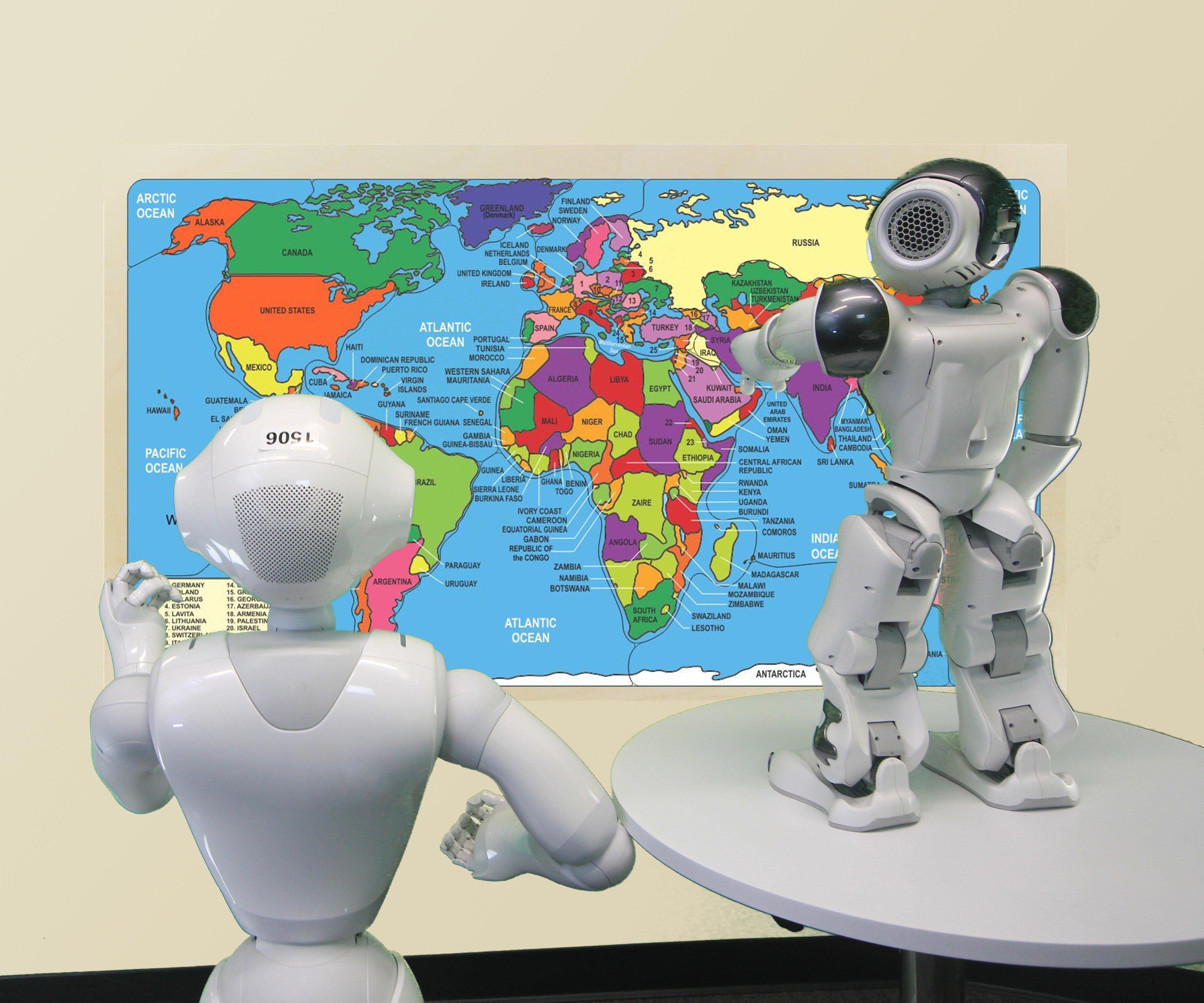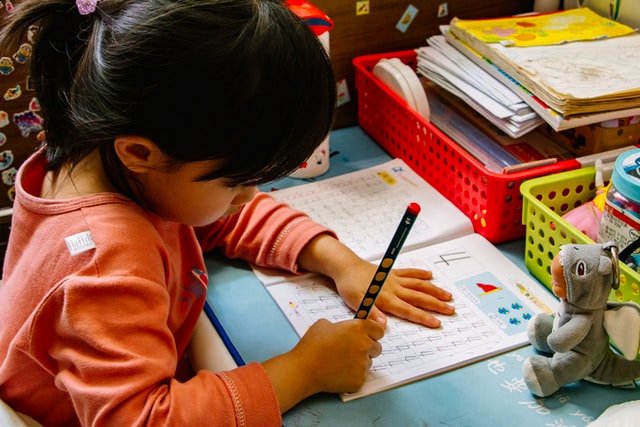Why All Students Must Be Given Equal Access to STEM Classes
By Dan Matthews
Robust STEM education makes students more employable and equips them with the skills necessary to succeed in an ever-changing world. In addition, the US Bureau of Labor Statistics reports that those working in STEM fields earn an annual median salary of $89,780 - that’s $49,760 more than those working in non-STEM fields.
- 0 Comments
- Nov 22, 2021 10:00:00 AM
- Posted by Maria Alejandra Calcetero
- Topics: Robotics, EdTech, STEM, Education, code, 21st Century Classroom, Special Education, Artificial Intelligence, data literacy, Coding, Robots,, students, programming, Technology, VR, Realidad Virtual, STEMchat, Edchat, AI, k12, Virtual Reality, virtual learning, classroom, Inteligencia Artificial, Literacy, STEM literacy
8 Signs that a Career in Technology Might Be Right for a Student
By Shawn Mack
 Photo by javier trueba on Unsplash
Photo by javier trueba on Unsplash
Since the invention of the vacuum tube computers, the world has only been moving forward in terms of tech. With every passing day, innovative minds are coming up with solutions to the challenges they face every day. Today, nothing is an obstacle anymore. Everything is doable.
Perhaps, this explains why the tech industry is expected to touch about of market value by the end of this very year. The current growth rate of the industry is about 4.2 percent, which is only expected to grow in the coming years. Overall, employment in computer and information technology will witness from 2020 to 2030, which will add up to about 667600 newer job opportunities.
- 0 Comments
- Nov 18, 2021 10:00:00 AM
- Posted by Maria Alejandra Calcetero
- Topics: Robotics, EdTech, STEM, Education, code, 21st Century Classroom, Special Education, Artificial Intelligence, data literacy, Coding, Robots,, students, programming, Technology, VR, Realidad Virtual, STEMchat, Edchat, AI, k12, Virtual Reality, virtual learning, classroom, Inteligencia Artificial, Literacy, STEM literacy
7 STEM Careers Kids Can Explore
 Photo by Marisa Howenstine on Unsplash
Photo by Marisa Howenstine on Unsplash
Is your child interested in exploring a STEM-related career? Check out these 7 career paths that involve science, technology, engineering, or math, and find one that suits your child's interests.
- 0 Comments
- Nov 16, 2021 10:00:00 AM
- Posted by Maria Alejandra Calcetero
- Topics: Robotics, EdTech, STEM, Education, code, 21st Century Classroom, Special Education, Artificial Intelligence, data literacy, Coding, Robots,, students, programming, Technology, VR, Realidad Virtual, STEMchat, Edchat, AI, k12, Virtual Reality, virtual learning, classroom, Inteligencia Artificial, Literacy, STEM literacy
7 Ways That Artificial Intelligence Helps Students Learn

The role of artificial intelligence in education is always a hot topic. While some fear that artificial intelligence will take over education to the detriment of students and teachers, others claim that artificial intelligence will revolutionize and improve education.
While we’re far from seeing robots in the classroom, artificial intelligence is making its way into education. Certain tasks can be made easier through the use of artificial intelligence. Grading, for example, can be done quickly and easily using artificial intelligence. The most important way that education will transform education is by simply helping students to learn. In this piece, I will discuss 7 ways that artificial intelligence helps students learn.
- 0 Comments
- Nov 12, 2021 10:00:00 AM
- Posted by Maria Alejandra Calcetero
- Topics: Robotics, EdTech, STEM, Education, code, 21st Century Classroom, Special Education, Artificial Intelligence, data literacy, Coding, Robots,, students, programming, Technology, VR, Realidad Virtual, STEMchat, Edchat, AI, k12, Virtual Reality, virtual learning, classroom, Inteligencia Artificial, Literacy, STEM literacy
RobotLAB, America's Exclusive SoftBank Robotics Distributor, to Cover Middle East, Asia, and the Pacific

RobotLAB Inc. the world's leading educational and business robotics integrator has entered an agreement with SoftBank Robotics to expand the distribution territory from the Americas to Asia, the Middle East, and the Pacific.
- 0 Comments
- Nov 10, 2021 2:30:00 PM
- Posted by Maria Alejandra Calcetero
- Topics: Robotics, EdTech, STEM, Education, code, 21st Century Classroom, Special Education, Artificial Intelligence, data literacy, Coding, Robots,, students, programming, Technology, VR, Realidad Virtual, STEMchat, Edchat, AI, k12, Virtual Reality, virtual learning, classroom, Inteligencia Artificial, Literacy, STEM literacy
What Educators Should Know About Too-Good-To-Be-True Software Prices?
By Devin Partida

Photo by Mimi Thian on Unsplash
If you're a K-12 educator, you know how crucial it is to budget appropriately for spending on class supplies, software, and instructional materials.
You likely need to spend money out of your pocket to account for classroom decor, office supplies like pens and pencils, and other things. Those transactions can add up, leaving you feeling overwhelmed when all you're trying to do is create a welcoming learning environment for your students.
While some schools offer some supplies to their teachers or have the funds to issue reimbursements, not every teacher is lucky enough to reap that benefit. It's only natural for you to try and find workarounds, such as downloading useful learning materials from the internet at a low cost. There are some technologies changing education that you simply cannot do without, and educational software is no exception.
You may want to take advantage of these cheap deals, but have you ever thought about the possible consequences of downloading software from an unknown source?
Let's explore what pirated software is, the consequences of downloading it, and how you can identify some of the warning signs to look out for when using cheap software.
- 0 Comments
- Nov 10, 2021 10:00:00 AM
- Posted by Maria Alejandra Calcetero
- Topics: Robotics, EdTech, STEM, Education, code, 21st Century Classroom, Special Education, Artificial Intelligence, data literacy, Coding, Robots,, students, programming, Technology, VR, Realidad Virtual, STEMchat, Edchat, AI, k12, Virtual Reality, virtual learning, classroom, Inteligencia Artificial, Literacy, STEM literacy
Create a Culture of Learning in Your Classroom
 Photo by Kuanish Reymbaev on Unsplash
Photo by Kuanish Reymbaev on Unsplash
Maybe you’ve witnessed a classroom where the focus on learning is intense.
A hum of excitement resonates in the air, and everyone, the teacher and students alike, goes about their work with a focused purpose. Everyone is engaged. The workflow is fluid. Routines are seamless. The students help each other succeed.
Maybe that classroom is yours.
If it’s not, it can be.
- 0 Comments
- Nov 9, 2021 10:00:00 AM
- Posted by Maria Alejandra Calcetero
- Topics: Robotics, EdTech, STEM, Education, code, 21st Century Classroom, Special Education, Artificial Intelligence, data literacy, Coding, Robots,, students, programming, Technology, VR, Realidad Virtual, STEMchat, Edchat, AI, k12, Virtual Reality, virtual learning, classroom, Inteligencia Artificial, Literacy, STEM literacy
Using Artificial Intelligence To Help Students With Learning Disabilities Learn

Educators can have a challenging time adapting their teaching style to match every student, especially when there are students with learning disabilities in their classroom. A learning disability presents a unique obstacle to traditional teaching methods. It can be difficult in a contemporary classroom for teachers to give students the attention and instruction they really need. Now, they might be able to receive that instruction through the use of artificial intelligence.
Artificial intelligence is rapidly growing more useful by the day. Researchers are developing cognitive systems that can help to support those with disabilities in the unique ways that suit them. These AI programs may be able to present material in a fresh way that can help students to better understand independent of teacher instruction.
- 0 Comments
- Nov 8, 2021 10:00:00 AM
- Posted by Maria Alejandra Calcetero
- Topics: Robotics, EdTech, STEM, Education, code, 21st Century Classroom, Special Education, Artificial Intelligence, data literacy, Coding, Robots,, students, programming, Technology, VR, Realidad Virtual, STEMchat, Edchat, AI, k12, Virtual Reality, virtual learning, classroom, Inteligencia Artificial, Literacy, STEM literacy
Why STEM literacy is critical for our students
By John Wheeler
 Image source: https://unsplash.com/
Image source: https://unsplash.com/
Developing students’ STEM literacy provides students with the critical skills they will use later in life.
- 0 Comments
- Nov 5, 2021 10:00:00 AM
- Posted by Maria Alejandra Calcetero
- Topics: Robotics, EdTech, STEM, Education, code, 21st Century Classroom, Special Education, data literacy, Coding, Robots,, students, programming, Technology, VR, Realidad Virtual, STEMchat, Edchat, k12, Virtual Reality, virtual learning, classroom, Literacy, STEM literacy
Making the Most of Your EdTech Toolbox
 Image source: https://unsplash.com/s/photos/technology
Image source: https://unsplash.com/s/photos/technology
School leaders should be education technology leaders, ensuring that the resources available to teachers are useful and current.
- 0 Comments
- Nov 4, 2021 10:00:00 AM
- Posted by Maria Alejandra Calcetero
- Topics: Robotics, EdTech, STEM, Education, code, 21st Century Classroom, Special Education, data literacy, Coding, Robots,, students, programming, Technology, VR, Realidad Virtual, STEMchat, Edchat, k12, Virtual Reality, virtual learning, classroom, Literacy, STEM literacy
Relevant Posts
Popular Posts
Subscribe to Email Updates
-
I Want To Learn MoreADDITIONAL INFORMATION



